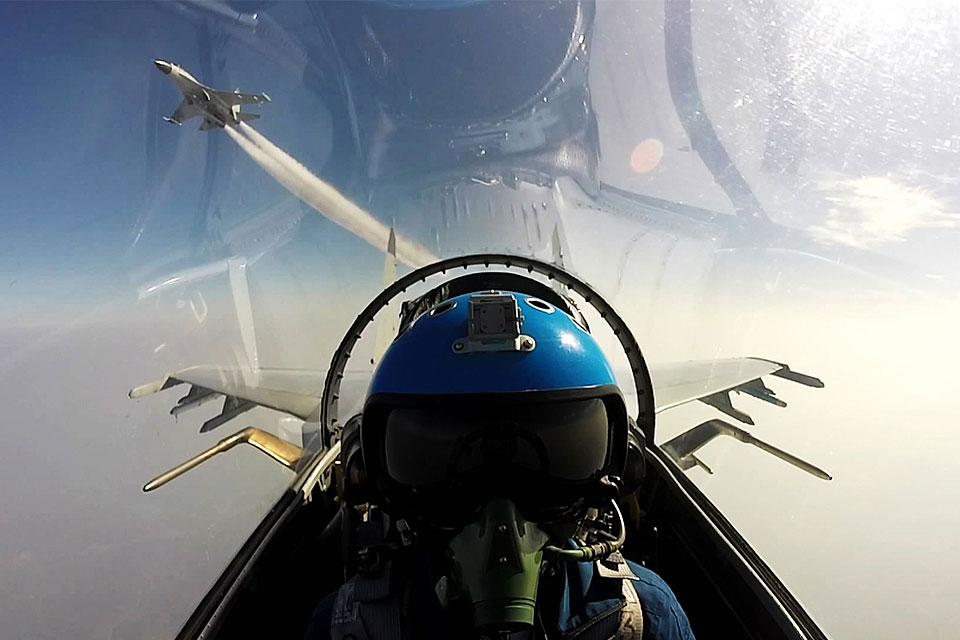Chinese jet performed risky maneuver near American surveillance plane — US

A Chinese fighter pilot performed an "unnecessarily aggressive maneuver" near an American surveillance aircraft operating over the South China Sea last week, the US military said Tuesday.
The incident -- which the Pentagon says is part of a pattern of behavior by China -- comes at a time of already heightened tensions between Washington and Beijing over issues including Taiwan and an alleged Chinese spy balloon that was shot down after traversing the United States earlier this year.
The Chinese plane "flew directly in front of and within 400 feet of the nose of the RC-135, forcing the US aircraft to fly through its wake turbulence" on Friday, the Indo-Pacific Command (INDOPACOM) said in a statement.
"The RC-135 was conducting safe and routine operations over the South China Sea in international airspace, in accordance with international law," the command said.
Declassified video footage shows a fighter plane crossing in front of the American aircraft, which can be seen shaking from the resulting turbulence.
A senior US defense official said there has been an "alarming increase in the number of risky aerial intercepts and confrontations at sea" by Chinese aircraft and ships -- actions that "have the potential to create an unsafe incident or miscalculation."
"We don't believe it's done by pilots operating independently," the official said. "We believe it's part of a wider pattern."
A similar incident involving a Chinese jet and a US RC-135 took place in December, forcing the American plane "to take evasive maneuvers to avoid a collision," INDOPACOM said at the time
The announcement on the latest incident came a day after the Pentagon said Beijing had refused a US invitation for Defense Secretary Lloyd Austin to meet his Chinese counterpart in Singapore later this week.
But the senior official said the timing of the announcement was unrelated to China's refusal of the invitation, explaining that information about the aircraft incident "was subject to the US military declassification process and US diplomatic communication process."
Austin and other US officials have been working to shore up alliances and partnerships in Asia as part of efforts to counter increasingly assertive moves by Beijing, but there have also been tentative signs that the two sides were working to lower the temperature.
US National Security Advisor Jake Sullivan and top Chinese diplomat Wang Yi met in Vienna earlier this month, and President Joe Biden later said that ties between Washington and Beijing should thaw "very soon." -- Agence France-Presse




